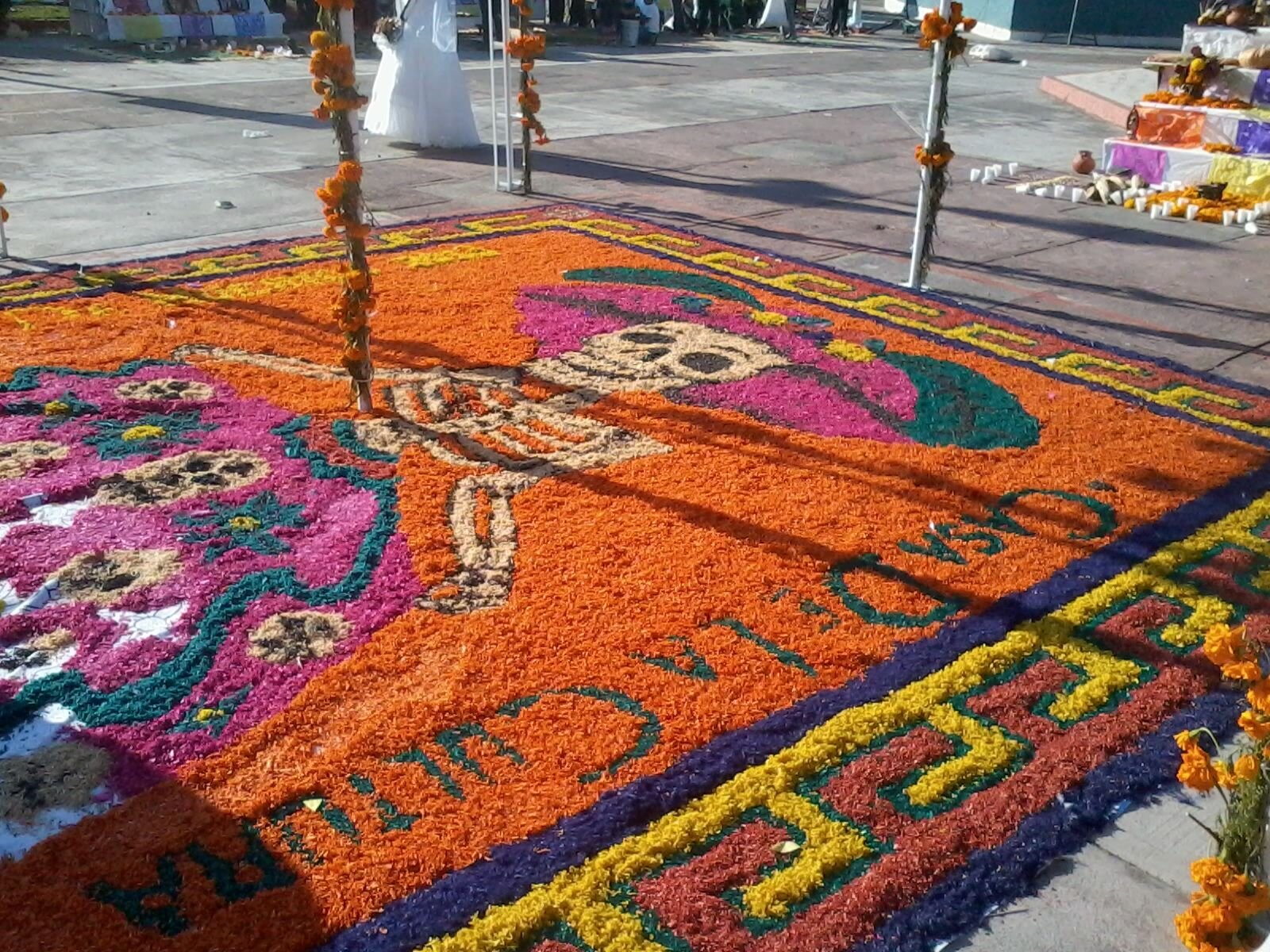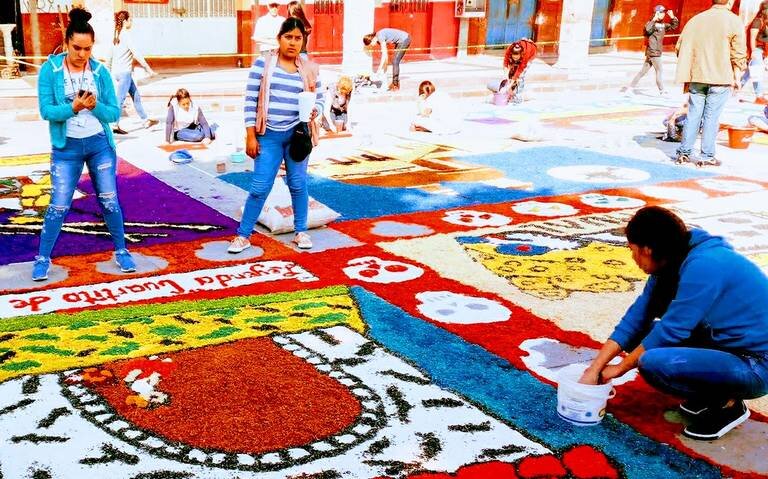Tradition of Tapetes
Tags: DDLMOne of the more elaborate and beautiful Dia de Muertos traditions is the creation of tapetes or “rugs/tapestries” comprised of flower petals, sand, rice, beans, sawdust, etc. The Center for Latin American Studies at Vanderbilt University writes: Spanish for “rug,” Dia de los Muertos tapetes are large, colorful piece of art made on the ground as part of the Dia de los Muertos celebration in parts of Mexico. They are made of colored sand, sawdust, or even pieces of flowers, feathers and other organic material. Tapetes can measure up to ten meters long and wide, and depict playful images of death.
The tradition of making tapetes originated in Spain as part of the Catholic feast of Corpus Christi, eventually leading up to Good Friday and Holy Week. The events mark the death and resurrection of Christ, and the tapetes for these celebrations depict scenes of the Passion. The Spanish brought this tradition to the Americas during conquest and colonialization. To this day countries throughout Latin America and some areas of the Southwestern United States celebrate Holy Week by making colorful tapetes of Catholic religious scenes.
In much of Latin America indigenous spirituality mixed with Catholicism to develop new unique traditions- this is the case with Day of the Dead tapetes in Mexico. Rather than historically Catholic imagery, Day of the Dead tapetes represent people’s transition from life to death. Scenes are brightly colored and festive, even ironic, showing images such as skeletons dancing and drinking. Dia de los Muertos tapetes give a glimpse into this syncretistic worldview that mourns death, but celebrates loved ones at the same time. This understanding of death and connection to loved ones passed away is central to the celebration of Dia de los Muertos.







